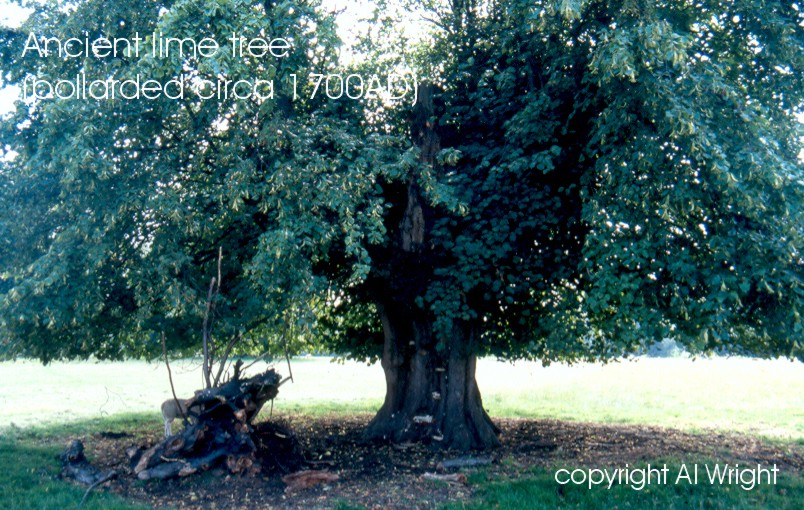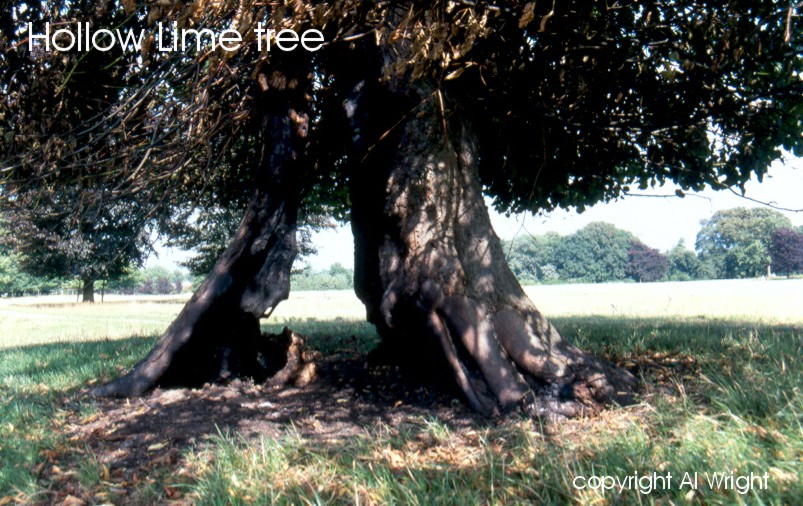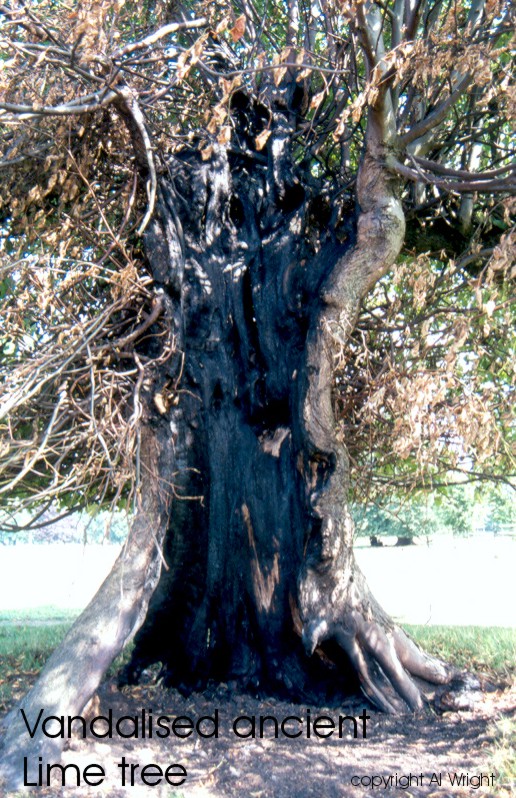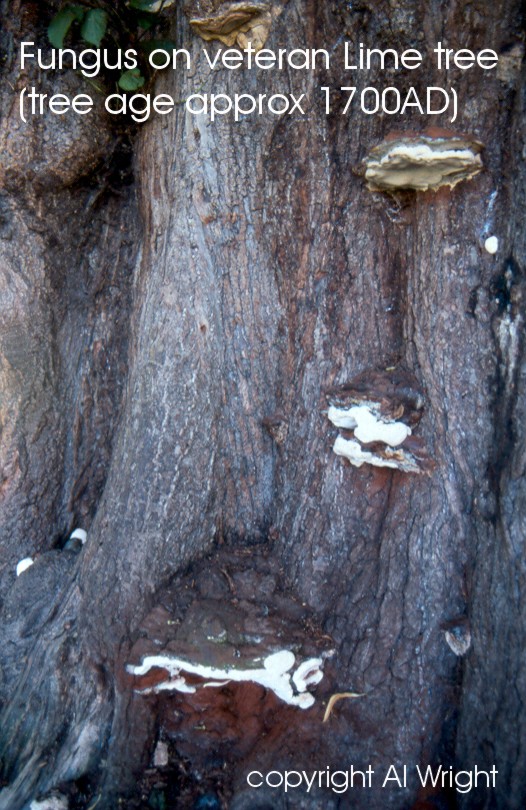LOWLAND WOOD, PASTURES
AND PARKLAND
LOCAL BIODIVERSITY ACTION PLAN
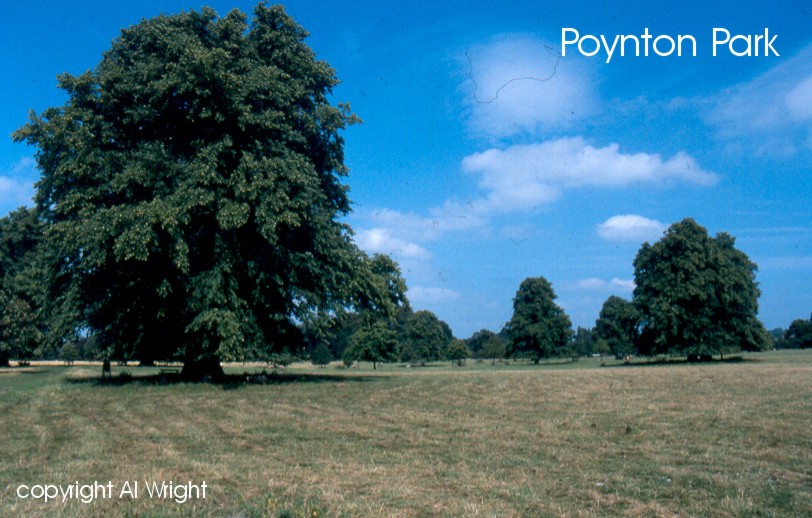 Links
to associated SAPs
Links
to associated SAPs
None
Current Status
Lowland wood pastures and parkland
represent a vegetation structure rather than a particular plant community. Typically
this structure consists of large open-grown or high forest trees at variable
densities, in a matrix of grazed grassland, heathland and/or woodland floras.
Tree management, usually by pollarding, has often helped to produce the characteristic
veteran trees, while grazing by domestic livestock, deer or rabbits maintains
the vegetation matrix (Reid 1997). Chatters and Sanderson (1994) identified
3 general types of grazed lowland woods: grazed high forest, parkland and grazed
coppice.
These habitats are particularly important
for the fungi, lichens, bryophytes and invertebrates associated with veteran
trees and decaying timber. Indeed, according to the UK Biodiversity Steering
Group Report (1995) UK lowland wood pasture and parkland provides the habitat
for 38 species of conservation concern. The fauna of dead wood (saproxylic species)
is threatened throughout Europe and Britain is important for this fauna in a
European context. Parklands and wood pasture may also preserve indigenous tree
genotypes. Veteran trees may be present in hedgerows.
Much relict parkland remains in the Cheshire region although this has largely
been changed to agriculture over time.
The UK Biodiversity Group Tranche
2 Action Plans, Volume II (EN 1998) contains a HAP for this habitat.
Threats
- Neglect or inappropriate management
of individual trees.
- Loss of trees through disease
or physiological stress either as a result of natural processes or human activity
(drought/soil compaction/root damage).
- Removal of standing and fallen
dead wood because they are perceived to be a safety risk.
- Lack of replacement trees, therefore,
lack of continuity in deadwood habitat; leading to further slow decline in
the quality of the habitat
- Conversion of wood pasture and
parkland to other uses such as arable land, amenity land (golf courses etc.)
or even housing/industrial developments.
- Inappropriate management of existing
parkland and wood-pasture habitats through conversion of surrounding pasture
into intensive grassland, or through intensified grazing regimes.
- Air pollution leading to epiphyte
and soil damage.
- 'Over-tidying' of parkland sites,
such as through the removal of fallen limbs / dead fallen timber, and by carrying
out conventional tree surgery, thus removing dead wood habitat from the tree
canopy.
How
are we helping to conserve Lowland Wood, Pastures and Parkland in the Cheshire
region?
- A Local BAP Action Group was formed
in September 1999 but lack of funds has prevented further action.
- Application of statutory powers
to protect species and sites.
- Encouraging the appropriate management
of parkland and wood-pasture habitats and working with land owners to ensure
best practice is achieved where possible to do so.
- Emphasising the availability of
grants that can benefit parkland and wood pasture sites.
- Provision of literature and advice
to landowners through a variety of organisations.
- Liaison with the Veteran Trees
Initiative.
- Development of a draft site register
for lowland wood-pasture and parkland.
Objectives,
Targets and Actions
OBJECTIVES
|
LOCAL
TARGETS
|
|
|
To
identify and maintain the current extent of lowland wood pasture, parkland
and individual veteran trees and avenues and promote the importance of
these habitats for wildlife.
|
1. Formation of representative
groups.
2. Pilot survey of two parkland sites to test and develop methodology, prior
to commencing a district by district county-wide survey to determine the
extent and quality of wood pasture and parkland habitats. |
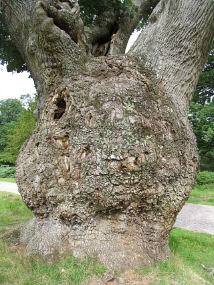 |
ACTIONS
REQUIRED
|
- Further funding to be sought
in order to extend the pilot survey into a countywide survey of parkland
and lowland wood-pasture sites.
- Input into the development
of a national register of deadwood sites, and initiate surveys of the
habitat to establish the extent and condition of the resource.
- Support and promote the
Veteran Trees Initiative.
- Consider Heritage Landscapes
designation or LNR status for unprotected sites.
- To work with landowners
and land managers in order to encourage the development and implementation
of long-term management plans.
- Ensure that the management
of these habitats maintains the full range of features (the full generation
structure of trees, standing and fallen dead wood, aquatic and other
open habitats, nearby nectar sources, wildflower areas).
- Encourage the use of plants
of local provenance, ideally progeny of the existing trees, for replacement
tree planting.
- Restore pasture-woodland
management on sites capable of responding to the system.
- Establish which species
could be used as indicators of habitat quality, e.g. RDB invertebrates,
lichens or fungi, and monitor the success of management.
- Consider species whose conservation
is linked with that of lowland wood pasture and parkland and produce
LBAPs for such species where appropriate.
- Develop training opportunities
for owners, advisors, arboriculturalists, foresters etc.
- Develop grant schemes for
the management of individual veteran trees.
- Identify key areas where
fragmentation of wood pasture can be addressed and actively pursue opportunities
for the purchase of lowland wood pasture and parkland.
- Encourage research into:
the premature aging of trees, the genetic basis of current stock, the
physiology of veteran trees and the effects of grassland management
on tree health, mycorhiza, available water, soil structure, root damage
etc., in order to achieve better survivorship during tree management
and to inform pasture management strategies.
|
Progress
so far
| 1997
- 2006 Action Completed |
- The group was formed in
September 1999 and held meetings at Chester, Dunham Massey, Combermere
and Cholmondeley.
- Liaison has been established
with the corresponding group in Staffordshire.
- Most parkland and wood-pasture
sites within Macclesfield Borough have been identified and Cheshire
County Council are assisting with aerial photograph and map acquisition,
which will help aid the field survey process.
- Pilot survey funding has
been approved.
|
How
to find out more about Lowland Wood, Pastures and Parkland
Woodland
Trust 5 year Ancient Tree Hunt - www.ancient-tree-hunt.org.uk
UK BAP for Lowland Wood-pasture and Parkland
- www.ukbap.org.uk/UKPlans.aspx?ID=5
Contact
details
|
LBAP Chair |
James
Hall, Cholmondeley Castle and Gardens Estate Office
Phone: 01829 720203 |
| National
Lead Partner |
Natural
England |
| National
Contacts |
Keith
Kirby, Natural England
Phone: 01733 455245 |
References
& Glossary
Chatters, C. and Sanderson, N. (1994):
Grazing Lowland Pasture Woods, British Wildlife, Volume 6 No. 2.
English Nature (1994): Invertebrates Conservation and Dead Wood, Species Conservation
handbook, Peterborough.
English Nature (1998): UK Biodiversity Group Report Tranche 2 Action Plans, Volume
II - terrestrial and freshwater habitats.
Reid, C. (1997): Draft Biodiversity Action plan for Lowland Wood-Pastures and
Parkland, English Nature, Peterborough.
HMSO (1995): Biodiversity: The UK Steering Group Report, Volume 1: Meeting the
Rio Challenge, London.


 Links
to associated SAPs
Links
to associated SAPs 